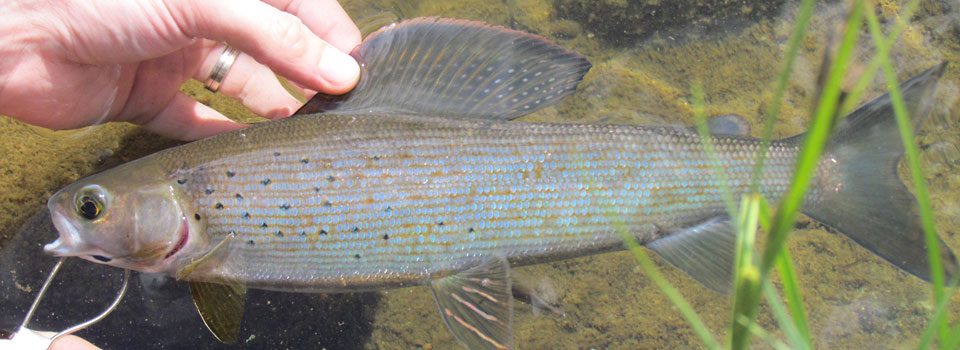Learning to fly fish takes patience, skill and discipline. Each species of fish requires different fly fishing techniques.
Fly Fishing for Lake Whitefish
Whitefish are usually caught incidentally. These fish are awesome fighters and make an incredible meal. Set up an imitation emerging chronomids about 2 inches off the bottom of the lake in around 20 feet of water. Have a strike indicator at the surface. As you see whitefish swim by, move the chronomids slightly to imitate an insect emerging from the bottom. You will learn over time when to set the hook which takes some experience as the whitefish will often suck the lure in then spit it out right away if it doesn’t taste right. This type of fishing requires patience but the challenge of the fight and potential for a great meal are well worth it. Another tactic is to sit on a shoal with visible Whitefish and throw small wet flies at them until you find one that gets them to bite.
Lake Trout Fly Fishing
Fly fishing for Lake Trout is most successful in the spring between the middle of May to the end of June. Cisco often swim around in schools and are about the same size and color as herring. If you see a school of Cisco you can bet there will be a few big Lake Trout following them. Throw your black and white, or dark blue and white sinking streamer into the school of Cisco and make your streamer look wounded. After June you will have to go deeper if you want to catch Lake trout. Fish off of drop offs and shoals. Trolling works on the fly. Don’t troll to fast and use your motor to control the depth of your fly. Dark overcast days seem more productive than clear days for Trout.
Fishing for Northern Pike
Northern Pike fly fishing is so much fun it should be illegal. The biggest Pike I’ve caught on the fly was 40 inches and the biggest one I know of being caught on the fly was 49 inches caught by Hans Van Klinken at Coghlan Lake. The nice part about fishing at our lakes is that you can almost always spot the Pike before you cast for it. Pike will remain in shallower waters throughout the year and are therefore easier to catch on the fly. Once again I have had luck imitating Cisco, which are black and white or dark blue and white. A little red in the streamer makes the fish look wounded and it doesn’t hurt to add a little flashy material to imitate the Cisco’s natural reflective qualities. Leeches work well too. When the Pike are aggressively feeding, switch to surface lures and try imitating mice, squirrels, frogs, and even baby ducks.
Fly Fishing for Arctic Grayling
Canadian fly fishing for Arctic Grayling is the best way to learn how to fly fish because it is the easiest species of sport fish to fish for. When the Grayling are biting it doesn’t matter what you throw at them, they will attack it. When they are more fickle try a Royal Coachman, a Caseless Caddis, or a Prince Nymph. Use a #2 to 4 rod. A reel with floating line and a long leader is nice because this setup allows you to use surface and sinking flies without changing your reel. These are the best fish to perfect your fly fishing techniques with as you will catch a lot of Grayling when they are on the bite.
Some things to remember while fishing in the Yukon; The fishery here is a fresh water fishery. It can take up to five years before a fish can reproduce here in these colder waters. It is therefore imperative that you take care of the bigger fish no matter what the species is. Honor the slot limits. We practice catch and release fly fishing and it is Whitehorse, Yukon regulation to use barbless hooks. Take care of this resource and it will be here for many years to come.



Find us on